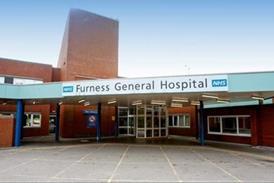- NHSX designing contact tracking app to help prevent spread of coronavirus
- NHS Digital developing algorithm to identify patients at risk of coronavirus
- Algorithm due to be signed off by chief medical officer Chris Whitty today
- NHS Digital told by health secretary to collect data to help broaden understanding of national response to coronavirus
NHSX is working on a contact tracking app to trace the spread of coronavirus through the population.
NHS Digital’s board was this morning told by chief executive Sarah Wilkinson that NHSX, an arm’s-length body reporting to the Department of Health and Social Care, was designing the software.
She said: “We are supporting them, to see if we can deploy it in to a live environment should it go beyond the pilot phase and we are also working with them on a data platform.”
Contact tracking is already in limited use for people who have tested positive and the discipline has a long history in tuberculosis outbreaks.
In a statement sent to HSJ, Matthew Gould, Chief Executive of NHSX, said : “NHSX are looking at whether app-based solutions might be helpful in tracking and managing coronavirus, and we have assembled expertise from inside and outside the organisation to do this as rapidly as possible.”
NHS Digital itself is developing an “algorithm” which will identify patients who are most at risk of developing complications from coronavirus.
Ms Wilkinson told the board: “We are delivering changes to summary care records, so there are two new flags going on the summary care record. One that will track whether someone is [covid-19] positive should that data be available, and one that will track whether someone is in the vulnerable category, should that be available.”
Letters will then be sent to those identified informing them how they can access healthcare if they need it and how to care for themselves.
The algorithm — which is expected to be signed off by chief medical officer Chris Whitty today — will consider factors such as age, clinical history and prescribing history.
The information would then be used to record vulnerable members of the population in “various places”, such as the summary care record — an electronic record of patient information created from GP medical records — and GP systems.
Ms Wilkinson said: “[The algorithm] considers age, it considers clinical history, it considers prescribing history, it looks at the set of population of people who have previously been identified as the appropriate population for flu jab, because there’s a good mirroring of vulnerability metrics with that population.”
NHS Digital has been asked by health and social care secretary Matt Hancock to collect and analyse data to aid the national response to coronavirus. The data will also be used to help healthcare professionals develop their understanding of the illness and establish how the health service is responding to it.
Mr Hancock has also given NHS Digital the power to disseminate the information to “approved organisations” to help them to tackle the pandemic.
In a statement released by NHS Digital, executive director of master registries and data Jem Rashbass said: “This is a rapidly moving situation and data is key to helping us understand how best to protect individuals at risk, know what is happening to patients and ensure that the NHS under pressure can deliver effectively.
“We are facing one of the most significant challenges in modern times and information about the virus, and people’s experience of it, is key to the research in pursuit of a vaccine or to gain new insights about the disease.
“NHS Digital will work closely with trusted partners to ensure that data is collected, analysed and disseminated in a way which supports the whole system.”
Source
NHS Digital meeting, NHS Digital statement
Source Date
March 2020



























7 Readers' comments